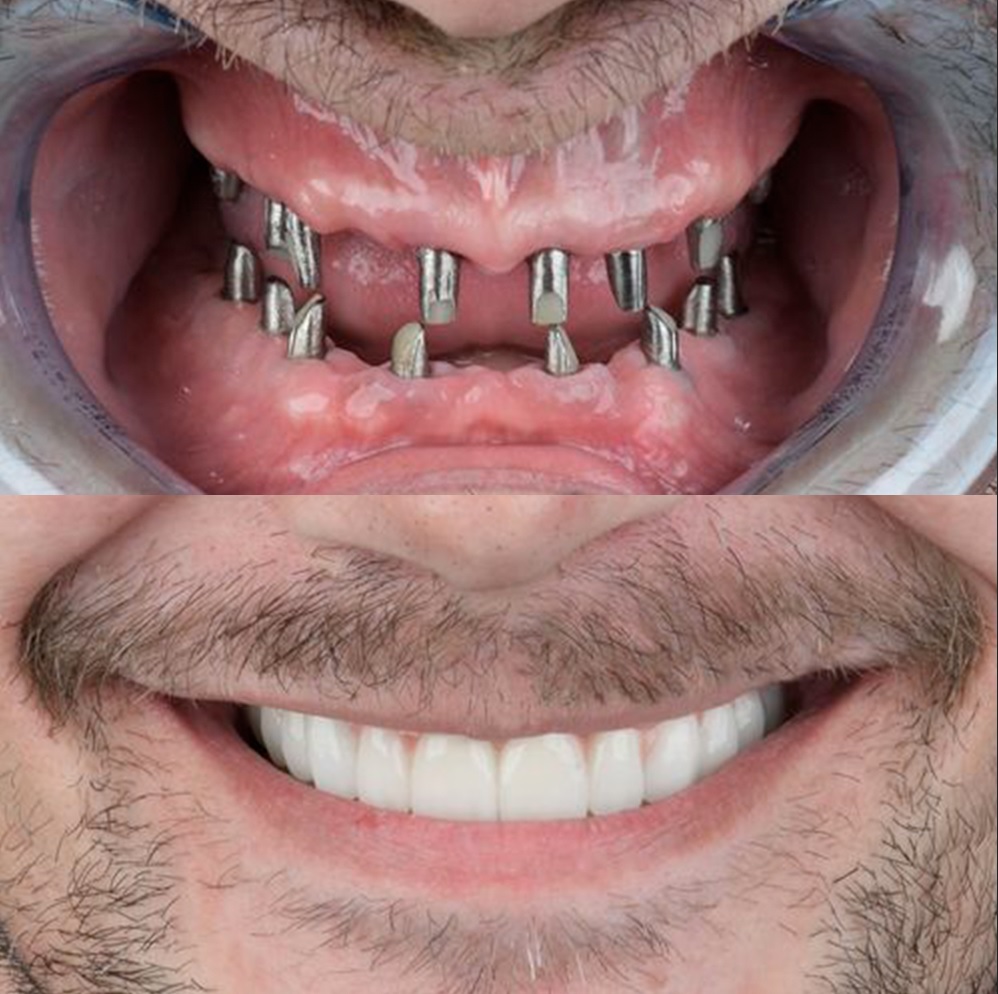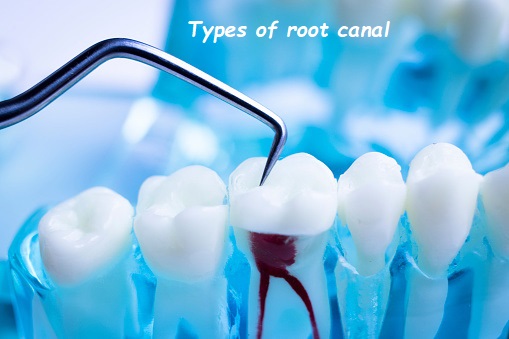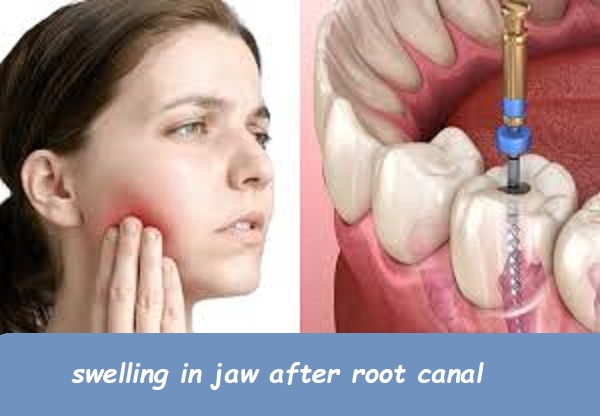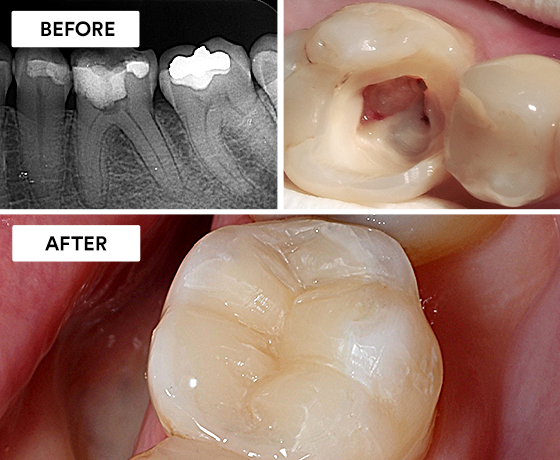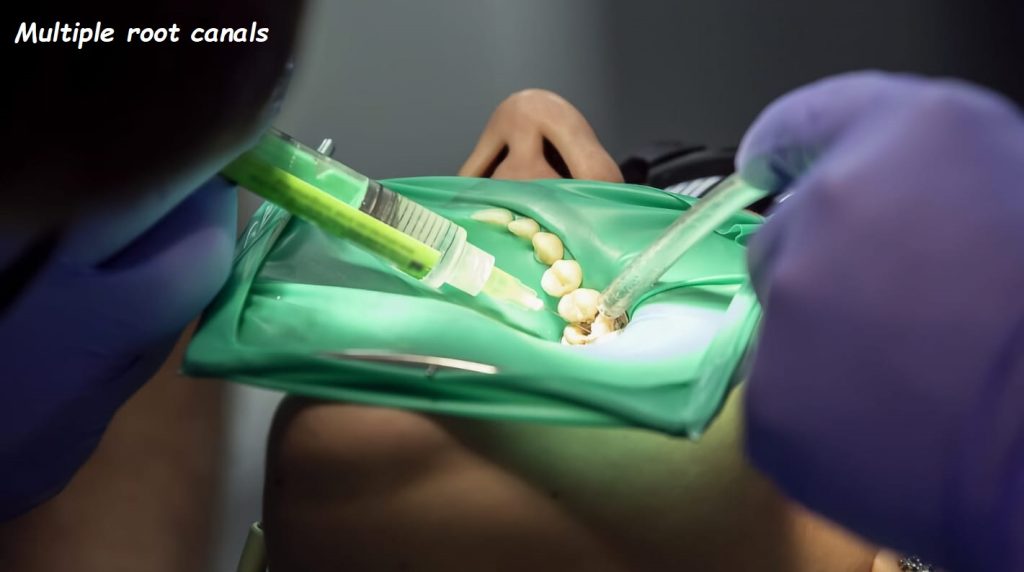partial root canal
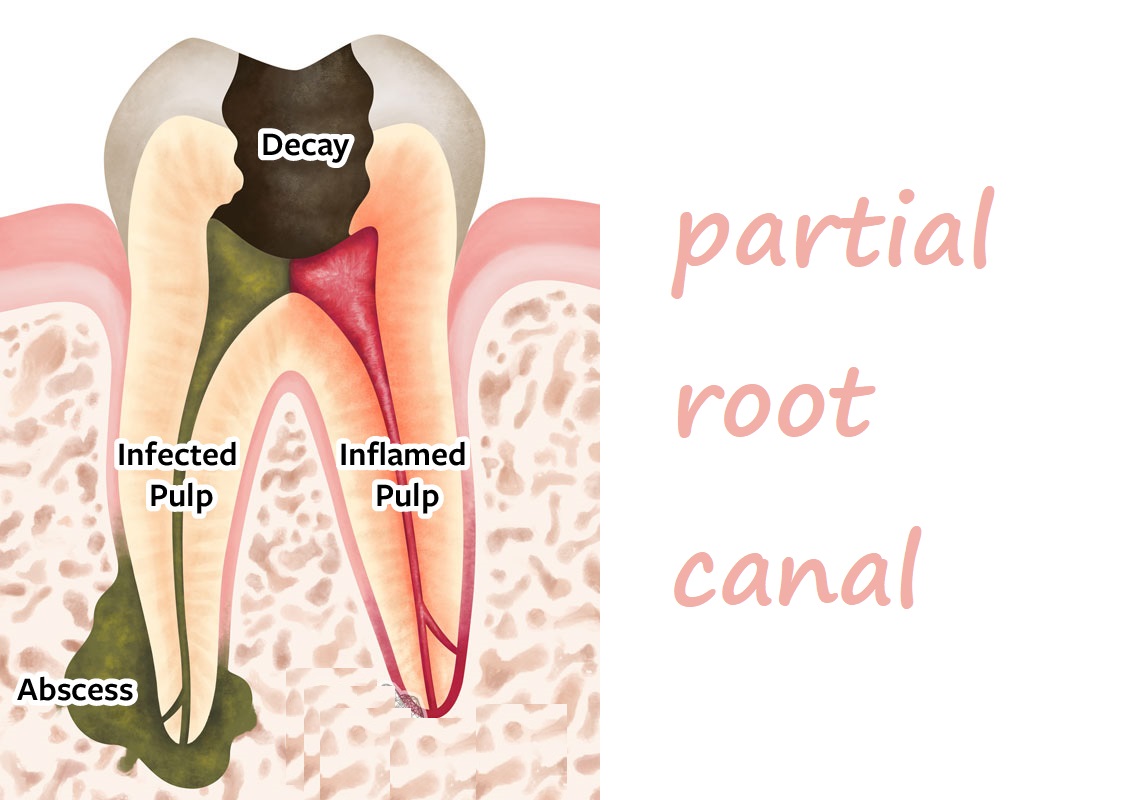
A root canal is a common dental procedure designed to save a tooth that is badly decayed or infected. However, not all root canal treatments are the same. In some cases, a partial root canal may be necessary. This article delves into the specifics of partial root canals, exploring what they are, when they are needed, how they differ from full root canals, and what to expect during and after the procedure.
What is a Partial Root Canal?
A partial root canal, also known as a pulpotomy, is a dental procedure that involves removing only a portion of the tooth’s pulp. The pulp is the soft tissue inside the tooth that contains nerves, blood vessels, and connective tissue. Unlike a full root canal, which involves removing all of the pulp from the tooth’s root canals, a partial root canal focuses only on the affected or infected part of the pulp, leaving the healthy portion intact.
Indications for a Partial Root Canal
A partial root canal is typically indicated in cases where:
- Early Stage of Infection: When the infection or decay has not yet spread throughout the entire pulp.
- Trauma: In cases of dental trauma, such as a fractured tooth, where the pulp is exposed but not extensively damaged.
- Young Permanent Teeth: In young patients with developing teeth, where preserving the vitality of the tooth is crucial for continued growth and development.
- Temporary Relief: As an interim solution to relieve pain and infection until a full root canal or other definitive treatment can be performed.
Differences Between Partial and Full Root Canal
The key differences between a partial root canal and a full root canal lie in the extent of the procedure and the amount of pulp removed:
- Extent of Pulp Removal: A full root canal involves the complete removal of the pulp from the tooth’s root canals, while a partial root canal only removes the affected portion of the pulp.
- Complexity and Duration: Partial root canals are generally less complex and shorter in duration compared to full root canals.
- Tooth Vitality: A partial root canal aims to preserve the vitality of the tooth by maintaining the healthy portion of the pulp, whereas a full root canal results in a non-vital tooth.
The Partial Root Canal Procedure
Understanding the steps involved in a partial root canal can help alleviate anxiety and prepare you for the procedure. Here is an overview of what to expect:
Initial Assessment and Diagnosis
Before performing a partial root canal, the dentist or endodontist will conduct a thorough examination to determine the extent of the infection or damage. This typically involves:
- Clinical Examination: Evaluating the tooth and surrounding tissues for signs of infection, decay, or trauma.
- X-Rays: Taking X-rays to assess the extent of the damage and to visualize the tooth’s root structure.
- Pulp Vitality Tests: Conducting tests to determine the health and vitality of the tooth’s pulp.
Anesthesia and Preparation
Once the diagnosis is confirmed, the dentist will administer local anesthesia to numb the tooth and surrounding area. This ensures that you do not feel pain during the procedure. In some cases, additional sedation options, such as nitrous oxide (laughing gas) or oral sedatives, may be used to help you relax.
Accessing the Pulp
The dentist will create an opening in the crown of the tooth to access the pulp chamber. This is typically done using a dental drill. The size and location of the opening depend on the tooth being treated and the extent of the damage.
Removing the Affected Pulp
Using specialized instruments, the dentist will carefully remove the infected or damaged portion of the pulp. The goal is to remove only the affected tissue while preserving the healthy pulp. This step requires precision to ensure that all infected material is removed without causing further damage to the tooth.
Cleaning and Disinfecting
After the affected pulp is removed, the pulp chamber and surrounding areas are thoroughly cleaned and disinfected. This helps to eliminate any remaining bacteria and prevent further infection. The dentist may use antimicrobial solutions or medicated dressings to aid in the disinfection process.
Sealing the Tooth
Once the cleaning and disinfection are complete, the dentist will fill the pulp chamber with a biocompatible material, such as gutta-percha, to seal the space. This prevents bacteria from re-entering the tooth and causing reinfection. In some cases, a temporary filling may be placed, with a permanent restoration to be completed at a later date.
Final Restoration
In most cases, a crown or other type of restoration is recommended to protect the tooth and restore its function. The final restoration helps to reinforce the tooth’s structure and prevent fractures or further damage. The type of restoration used depends on the tooth’s location, function, and the extent of the damage.
Aftercare and Recovery
Proper aftercare is essential for a successful recovery from a partial root canal. Here are some tips to help you heal and protect your treated tooth:
Managing Pain and Discomfort
It’s common to experience some pain and discomfort after a partial root canal. Over-the-counter pain relievers, such as ibuprofen or acetaminophen, can help manage this. Your dentist may also prescribe pain medication if needed. Applying a cold compress to the outside of your cheek can help reduce swelling.
Following Post-Procedure Instructions
Your dentist will provide specific aftercare instructions, which may include:
- Avoiding Hard or Chewy Foods: To prevent putting pressure on the treated tooth, avoid hard or chewy foods for a few days.
- Maintaining Good Oral Hygiene: Brush and floss gently around the treated tooth to keep the area clean and prevent infection.
- Rinsing with Warm Salt Water: Rinse your mouth with warm salt water to soothe the area and promote healing.
Attending Follow-Up Appointments
It’s important to attend any scheduled follow-up appointments to ensure proper healing and to discuss the placement of a permanent restoration if needed. Your dentist will monitor the treated tooth and address any concerns.
Monitoring for Complications
While complications are rare, it’s important to be aware of potential signs of problems, such as:
- Severe Pain: Persistent or severe pain that does not improve with pain relievers may indicate an issue.
- Swelling: Swelling that worsens or spreads could be a sign of infection.
- Sensitivity: Ongoing sensitivity to hot or cold may indicate that further treatment is needed.
- Infection Signs: Fever or a foul taste in your mouth could be signs of infection.
If you experience any of these symptoms, contact your dentist promptly for evaluation and treatment.
Benefits of a Partial Root Canal
A partial root canal offers several benefits, particularly in cases where preserving the tooth’s vitality is essential. Some of the key advantages include:
Preserving Tooth Vitality
One of the primary benefits of a partial root canal is that it preserves the healthy portion of the tooth’s pulp. This is especially important for young patients with developing teeth, as it allows the tooth to continue growing and developing properly.
Reducing the Risk of Tooth Loss
By addressing the infection or damage early, a partial root canal can help prevent the need for a full root canal or tooth extraction. This reduces the risk of tooth loss and the need for more extensive dental treatments in the future.
Minimizing Treatment Complexity
A partial root canal is generally less complex and shorter in duration compared to a full root canal. This can make the procedure more manageable for patients and reduce the overall treatment time.
Alleviating Pain and Discomfort
A partial root canal can provide relief from the pain and discomfort associated with an infected or damaged tooth. By removing the affected portion of the pulp, the procedure alleviates symptoms and helps restore normal function.
Potential Risks and Complications
As with any dental procedure, a partial root canal carries some risks and potential complications. These may include:
Incomplete Removal of Infection
If the infected or damaged pulp is not completely removed, there is a risk of reinfection. This may necessitate additional treatment, such as a full root canal or extraction.
Tooth Fracture
Without a full restoration, such as a crown, the treated tooth may be at risk of fracture. This is particularly true for molars and premolars, which are subject to significant chewing forces.
Sensitivity
Some patients may experience ongoing sensitivity to hot or cold following a partial root canal. This can indicate that further treatment is needed.
Failure to Preserve Tooth Vitality
In some cases, despite the dentist’s best efforts, the tooth may not remain vital. This could require additional treatment, such as a full root canal or extraction.
Cost and Insurance Coverage
The cost of a partial root canal can vary depending on several factors, including the location of the tooth, the complexity of the procedure, and the dentist’s fees. On average, a partial root canal may cost between $200 and $500. This is generally less expensive than a full root canal, which can cost between $700 and $1,500 or more.
Insurance Coverage
Many dental insurance plans cover a portion of the cost of root canal treatments, including partial root canals. Coverage amounts and limitations vary by plan, so it’s important to review your policy and discuss coverage with your insurance provider. Some plans may cover the entire cost, while others may require a copayment or deductible.
Payment Options
If you do not have dental insurance or if your insurance does not fully cover the cost, many dental offices offer payment plans or financing options. These can help spread the cost over several months or years, making the procedure more affordable.
Prevention and Maintenance
Preventing dental issues that could lead to the need for a partial root canal is always preferable. Here are some tips for maintaining good oral health and reducing the risk of dental problems:
Good Oral Hygiene
Maintaining good oral hygiene is essential for preventing tooth decay and gum disease. This includes:
- Brushing: Brush your teeth at least twice a day with fluoride toothpaste. Use a soft-bristled toothbrush and replace it every three to four months.
- Flossing: Floss daily to remove plaque and food particles from between your teeth and along the gumline.
- Rinsing: Use an antimicrobial mouthwash to help reduce plaque and prevent gum disease.
Regular Dental Checkups
Regular dental checkups and cleanings are crucial for maintaining oral health. Your dentist can identify early signs of decay or infection and provide timely treatment to prevent more serious issues. Aim to visit your dentist at least twice a year, or as recommended based on your individual needs.
Healthy Diet
A healthy diet can help prevent tooth decay and maintain overall oral health. Limit sugary and acidic foods and beverages, as these can contribute to tooth decay. Instead, focus on a balanced diet rich in fruits, vegetables, lean proteins, and whole grains.
Avoiding Tobacco
Tobacco use, including smoking and chewing tobacco, can increase the risk of tooth decay, gum disease, and oral cancer. Quitting tobacco use can significantly improve your oral health and reduce the risk of dental problems.
Protecting Your Teeth
If you participate in contact sports or activities that put your teeth at risk, consider wearing a mouthguard. Mouthguards can help protect your teeth from trauma and reduce the risk of fractures or other injuries.
Conclusion
A partial root canal is a valuable dental procedure designed to save a tooth while preserving its vitality. By removing only the affected portion of the pulp, a partial root canal can alleviate pain, prevent further infection, and reduce the need for more extensive treatments. Understanding the procedure, its benefits, and potential risks can help you make informed decisions about your dental care.
If you are experiencing tooth pain or suspect you may need a partial root canal, consult with your dentist. They can provide a thorough assessment and recommend the best course of action to address your dental needs. With proper care and maintenance, you can enjoy a healthy, functional smile for years to come.


